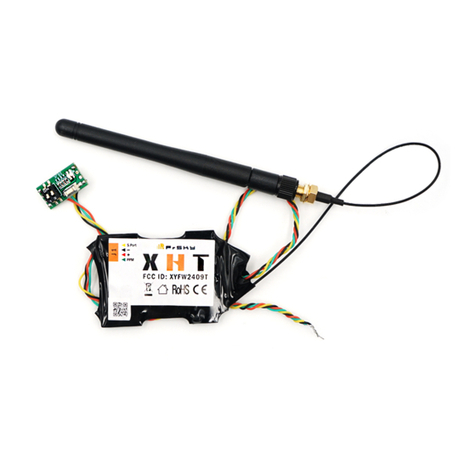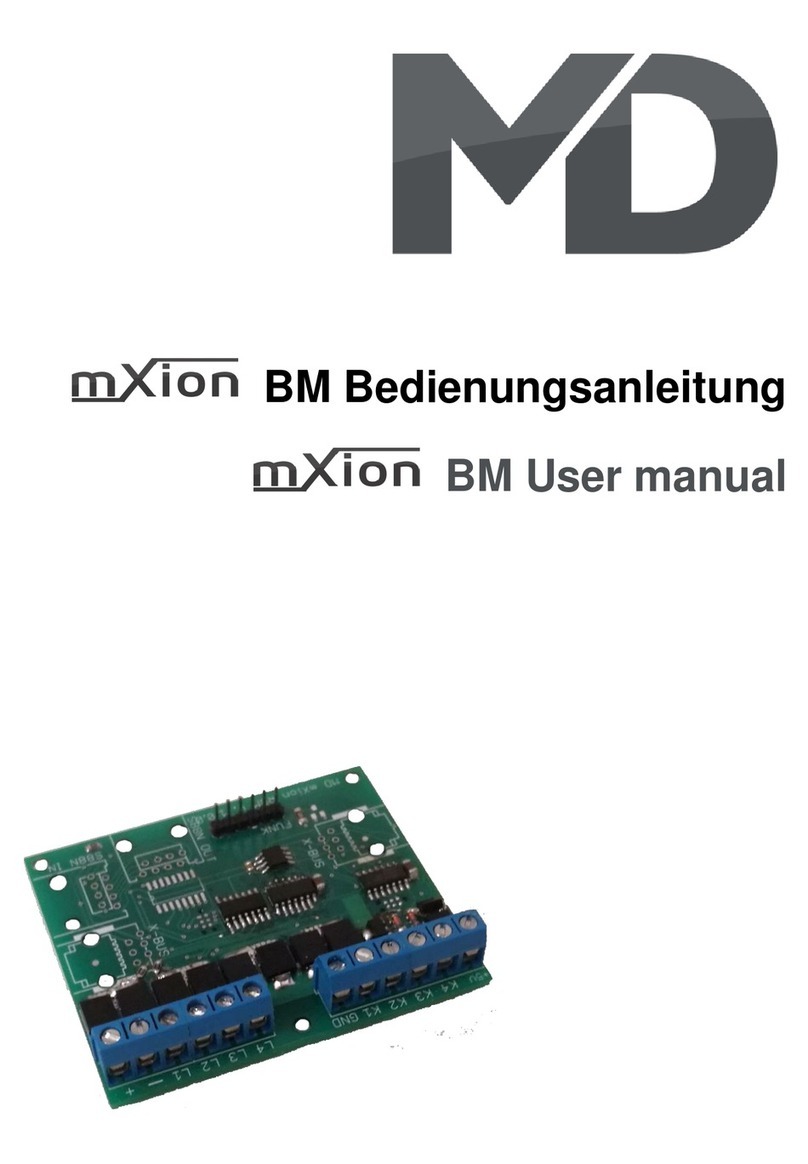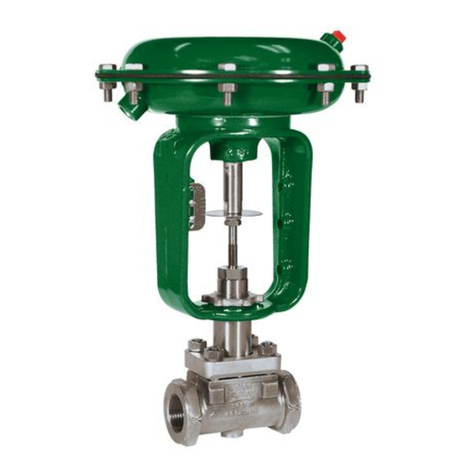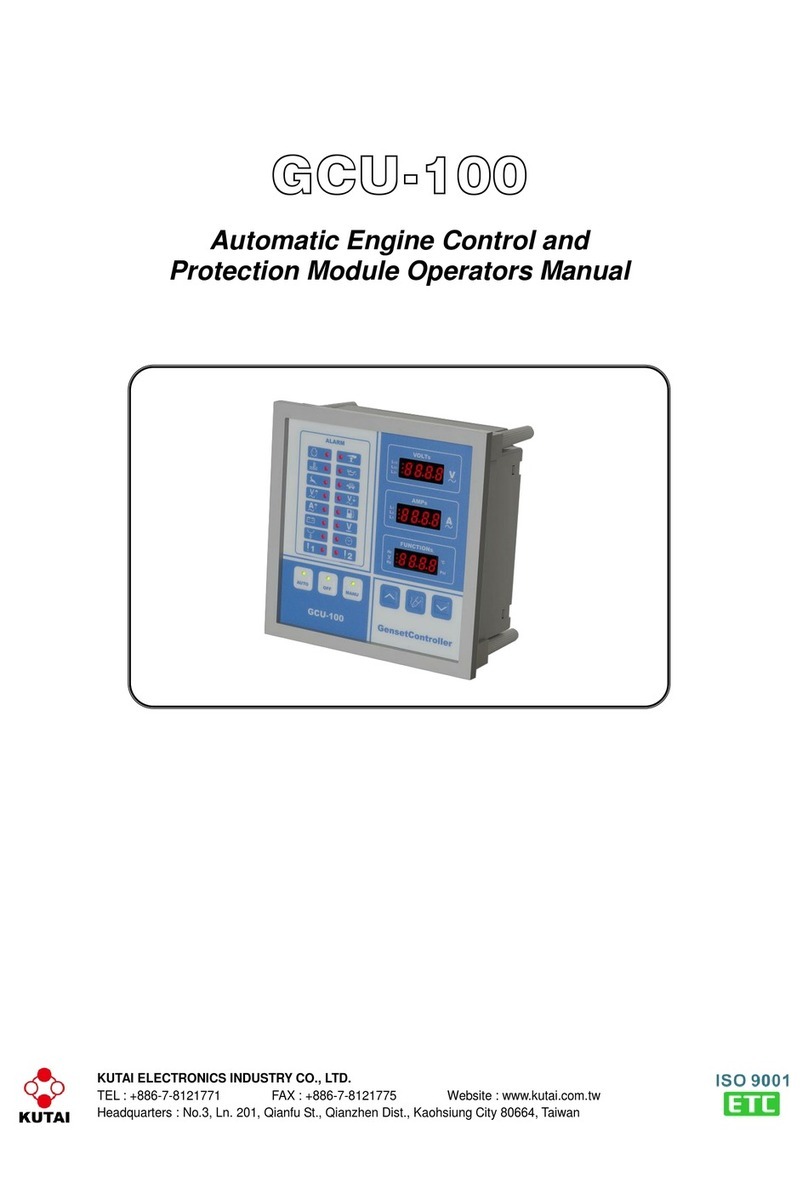Emakefun RF-NANO User manual

Copy right © 2018 Shenzhen Emakefun Technology co., Ltd.
1
RF-NANO
Operating Instruction
V.1.0

Copy right © 2018 Shenzhen Emakefun Technology co., Ltd.
2
Revision history
Date
Version
Description
Author
2019-7-25
V.1.0
Create a document
Abbott.Chen

Copy right © 2018 Shenzhen Emakefun Technology co., Ltd.
3
Table of contents
Chapter 1 RF-NANO Introduce.........................................................................................................................4
1.1 RF-NANO overview............................................................................................................................4
1.2 RF-NANO MCU introduce..................................................................................................................6
1.2.1 Power Supply............................................................................................................................7
1.2.2 Memory.....................................................................................................................................7
1.2.3 Input and Output.......................................................................................................................7
1.2.4 Communication Interface....................................................................................................7
1.2.5 ATmega328 with NRF24L01+ of communication...................................................................8
1.2.6 Downloader...............................................................................................................................9
1.2.7 Attention................................................................................................................................9
1.3 RF-NANO Driver installation..............................................................................................................9
1.3.1 Installation IDE.........................................................................................................................9
1.3.2 Driver installation ...................................................................................................................12
Chapter 2 working principle of rf-nano...........................................................................................................16
2.1 working principle introduction of rf-nano .........................................................................................16
2.2 Config word .......................................................................................................................................17
2.3 RF-NANO work module....................................................................................................................18
Chapter3 realizes the communication between rf-nano.................................................................................19
3.1 Implement two rf-nano point-to-point communication .....................................................................19
3.1.1 connect method.......................................................................................................................19
3.1.2 Principle of application...........................................................................................................20
3.1.3 Program code..........................................................................................................................21
3.2 Implement multiple send to a receive communication ......................................................................24
3.2.1 Experimental principle block diagram....................................................................................24
3.2.2 program code ..........................................................................................................................25
3.3 Implement a send to multiple receive communication ......................................................................29
3.3.1 Experimental principle block diagram....................................................................................29
3.3.2 program code ..........................................................................................................................29
Chapter 4 Sets the transmitting power and data transmission rate ..................................................................33
4.1 Set the transmitted power of RF-NANO ...........................................................................................33
4.2 Set RF-NANO data transfer rate........................................................................................................34

Copy right © 2018 Shenzhen Emakefun Technology co., Ltd.
4
Chapter 1 RF-NANO Introduce
1.1 RF-NANO overview
The board of rf-nano is integrated into NRF24L01+ chip, making it have unlimited transceiver function,
which is equivalent to combining an ordinary NANO board and an NRF24L01+ module into one, as shown
in figure 1-1-1. It is more convenient to use, and the small size rf-nano is exactly the same as the common
pin of NANO board, convenient for transplantation.
Figure 1-1-1

Copy right © 2018 Shenzhen Emakefun Technology co., Ltd.
5
Figure 1-1-2

Copy right © 2018 Shenzhen Emakefun Technology co., Ltd.
6
Figure 1-1-3
1.2 RF-NANO MCU introduce
Arduino rf-nano MCU is ATmega328(Nano3.0), usb-micro interface, with 14 channels of digital
input/output (6 channels can be used as PWM output), 8 channels of analog input, a 16MHz crystal
oscillator, a usb-micro port, an ICSP header and a reset button.
The processor ATmega328
Working voltage 5v
Input voltage (recommended) 7-12v
Input voltage (range) 6-20v
Digital IO pin 14 (6 of which can be used as PWM output)
Analog input pin 6
IO pin DC 40 mA
Flash Memory 16 or 32 KB (in which 2 KB for bootloader)
SRAM 1KB or 2KB

Copy right © 2018 Shenzhen Emakefun Technology co., Ltd.
7
EEPROM :1KB (ATmega328)
CH340 USB to serial port chip
Clock 16 MHz
1.2.1 Power Supply
Arduino Nano power supply mode: mini-B USB interface power supply and external vin connection
7~12V external DC power supply
1.2.2 Memory
ATmega328 includes on-chip 32KB Flash, of which 2KB is used for Bootloader. There are also 2KB
SRAM and 1KB EEPROM.
1.2.3 Input and Output
14 digital input and output ports: The working voltage is 5V, and each channel can output and access
the maximum current of 40mA. Each channel is equipped with a 20-50K ohm internal pull-up resistance
(not connected by default). In addition, some pins have specific functions.
Serial signal RX (0), TX (1): It provides serial port receiving signal with TTL voltage level, connected
to the corresponding pin of FT232Rl.
External Interrupt (No. 2 and No. 3): Trigger interrupt pin, which can be set to rising edge, falling edge
or simultaneous trigger.
Pulse Width Modulation PWM (3, 5, 6, 9, 10, 11): Provides 6 channel, 8-bit PWM outputs.
SPI(10(SS),11(MOSI),12(MISO),13(SCK):SPI Communication Interface.
LED (No. 13): Arduino is specially used to test the reserved interface of the LED. When the output is
high, the LED is lit. When the output is low, the LED is off.
6 analog inputs A0 to A5: Each channel has a resolution of 10 bits (that is, the input has 1024 different
values), the default input signal range is 0 to 5V, and the input upper limit can be adjusted by AREF. In
addition, some pins have specific functions.
TWI interface (SDA A4 and SCL A5): Supports communication interface (compatible with I2C bus).
AREF: The reference voltage of the analog input signal.
Reset:The microcontroller chip is reset when the signal is low.
1.2.4 Communication Interface
Serial port: The built-in UART of ATmega328 can communicate with external serial port through digital
port 0 (RX) and 1 (TX).

Copy right © 2018 Shenzhen Emakefun Technology co., Ltd.
8
1.2.5 ATmega328 with NRF24L01+ of communication
ATmega328 and NRF24L01+ are SPI communication, and the schematic diagram is shown in figure
1-2-1;
Figure 1-2-1
ATmega328 and NRF24L01+ chip pin connection:
ATmega328
NRF24L01+
+3.3V
VCC
GND
GND
D9
CSN
D10
CE
D11
MOSI
D12
MISO
D13
SCK
Note :ATmega328 already occupied pins D9,D10,D11,D12, and D13 cannot be reused

Copy right © 2018 Shenzhen Emakefun Technology co., Ltd.
9
1.2.6 Downloader
The MCU on the Arduino Nano has a bootloader program, so you can download the program directly
from the Arduino software. You can also directly download the program to the MCU through the ICSP
header on the Nano.
1.2.7 Attention
The Arduino Nano provides an automatic reset design that can be reset by the host. In this way, the
software can be automatically reset by the Arduino software in the program to the Nano, without pressing
the reset button.
1.3 RF-NANO Driver installation
1.3.1 Installation IDE
AduinoIDE is an open source software and hardware tool written by open source software such as Java,
Processing, and avr-gcc. It is an integrated development environment that runs on a computer. It can write
and transfer programs to the board. The major feature of the IDE is cross-platform compatibility for
Windows, MaxOSX, and Linux. Only a simple code base is needed, and the creators can create personalized
home internet solutions through the platform, such as remote home monitoring and constant temperature
control and so on.
In this tutorial, we use the version is 1.8.9, download address is :
https://www.arduino.cc/en/Main/OldSoftwareReleases#previous,After opening the link, we can see the
interface as shown in Figure 1-3-1. In this interface, we can see the different versions of the IDE and
different operating environments. Everyone can download according to their own computer system, of
course, There will be a downloaded installation package on our companion CD, but only the Windows
version, because this tutorial is all running under Windows system.

Copy right © 2018 Shenzhen Emakefun Technology co., Ltd.
10
Figure 1-3-1 ArduinoIDE download interface
After the downloading, we will get a compressed package as shown in Figure1-3-2. The compressed
package will be decompressed. After decompression, the files in Figure 2.1.3 are extracted. The “drivers” is
the driver software. When the “Arduino.exe” is installed, it will be Install the driver automatically. Because
the installation of "arduino.exe" is very simple, it will not be explained here. It is recommended to exit the
anti-virus software during the installation process, otherwise it may affect the installation of the IDE. After
the installation is complete, click "arduino.exe" again to enter the IDE programming interface.
Figure 1-3-2 ArduinoIDE installation package

Copy right © 2018 Shenzhen Emakefun Technology co., Ltd.
11
Figure 1-3-3 Extracted files
Arduino IDE After the installation, we hook up the Arduino motherboard and right-click on my
computer (properties (device manager (look at the ports (COM and LTP), as shown in figure 1-3-4
Figure 1-3-4
Then we open the IDE, select the corresponding development board model and port in the toolbar and it
will work normally. If it appears as shown in figure 1-3-5, it shows that the computer does not recognize the
development board and needs to install the driver itself

Copy right © 2018 Shenzhen Emakefun Technology co., Ltd.
12
Figure 1-3-5
1.3.2 Driver installation
Windows7 System driver installation steps
1)Right-click "my computer" (open device manager (look at ports (COM and LPT).At this point you will
see a "USB serial port", right-click "USB serial port" and select the "update driver software" option.

Copy right © 2018 Shenzhen Emakefun Technology co., Ltd.
13
Figure 1-3-6
2)Next, select the browse my computer for driver software options
Figure 1-3-7
3)Finally, select the driver file named CH341SER_for_64bit_win7, which is located in the Arduino_Nano
board driver folder. Please select the corresponding driver version according to your computer system model
Figure1-3-8

Copy right © 2018 Shenzhen Emakefun Technology co., Ltd.
14
Figure 1-3-9
4)After successful installation, the following screen will appear to inform you that the driver is successful.
Figure 1-3-10
At this point, we can go back to the device manager interface and see that the computer has successfully
recognized Arduino. As shown in figure 1-3-11 below, open the Arduino compilation environment and start
the Arduino journey

Copy right © 2018 Shenzhen Emakefun Technology co., Ltd.
15
Figure 1-3-11
Note: in the Win10 system, part of the Arduino in access to the computer (not the original chips are difficult
to identify), after the system will automatically download the corresponding drive, don't need to install the
driver himself, but in the Windows 7 system, you need to follow the steps above to manually install the
driver as shown in the above we can see the USB serial port is identified as the COM15, but different
computers may not be the same, you may be the COM4 COM5 etc., but the Arduino Nano this must be the
same if you didn't find the USB Serial port, may be you install the wrong, or the system is not compatible
Windows8 System driver installation steps
If your computer is Windows8: before installing the driver, you should save the files you are editing
because there will be several shutdowns during operation
1) press the Windows key + R
2) type shutdown. 00 exe/f/t/R/o
3) click ok button
4) the system will restart to choose an option screen
5) pick an option from the screen, select the troubleshooting
6) from the troubleshooting screen select advanced options to select Windows startup Settings from the
advanced options screen
7) click the restart button
8) system to restart to
9) to select advanced startup options screenDisable driver signature enforcement
10)once the system starts, you can install the Arduino driver as with Windows7

Copy right © 2018 Shenzhen Emakefun Technology co., Ltd.
16
WindowsXP System driver installation steps
If your computer is WindowsXP: the installation steps are basically the same as for Windows7, please
refer to the above Windows7 installation steps.
Chapter 2 working principle of rf-nano
2.1 working principle introduction of rf-nano
The rf-nano can transmit and receive data.
When transmitting data: first set NRF24L01+ as transmission mode: then put the receiving node address
TX_ADDR and effective data TX_PLD into NRF24L01+ cache bySPI port according to the time sequence.
If the automatic reply is turned on, NRF24L01+ will enter the receiving mode immediately after transmitting
data and receive the answering signal (the receiving address of the automatic reply should be the same as the
receiving node address TX_ADDR).If receive reply, consider the communication success, TX_DS set high, at
the same time TX_PLD from TX FIFO clear;If no reply is received, the data will be automatically
retransmitted (automatic retransmission is enabled). If the number of times of retransmission (ARC) reaches
the upper limit, MAX_RT will be set to a higher level, and the data in TX FIFO will be retained for subsequent
retransmission.When MAX_RT or TX_DS are set high, the IRQ becomes low and interrupts, notifies
MCU.When the launch is successful, if the CE is low, NRF24L01+ enters idle mode 1.If there is data in the
send stack and CE is high, it will enter the next launch.If no data is sent on the stack and the CE is high, then
idle mode 2 is entered.
When receiving data: NRF24L01+ is configured to receive mode first, followed by a delay of 130 microns
before it enters the receivingstate and waits for the data to arrive.When the receiver detects a valid address and
CRC, the packet will be stored in RX FIFO. At the same time, the interrupt flag bit RX_DR is set to high, IRQ
becomes low, generating an interrupt, and MCU is informed to fetch the data.If the automatic replyis on at this
time, the receiver will enter the transmitting state to return the reply signal at the same time.When receiving
successfully, if CE decreases, NRF24L01+ enters idle mode 1.Always go into standby or power down mode
before writing registers.As shown in figure 2-1-1, SPI operation sequence diagram is given:

Copy right © 2018 Shenzhen Emakefun Technology co., Ltd.
17
Figure 2-1-1 SPI read data
Figure 2-1-1 SPI write data
2.2 Config word
SPI port for synchronous serial communication interface, the maximum transfer rate
of 10 Mb/s, when the transmission transfer low byte first, and then transmit high byte
but for a single byte character, to send high to send low SPI related instructions
with a total of eight, when using the control instruction by NRF24L01 + MOSI input
from MISO output corresponding status and data information to the MCU nRF24L0l + are
defined by the configuration register all the configuration of the word, the
configuration register can be accessed through the SPI mouth NRF24L01 +Of the 25
configuration registers, the most common configuration registers are shown in table
2
Table 2: common configuration registers
Addres
s(H)
Register name
Function

Copy right © 2018 Shenzhen Emakefun Technology co., Ltd.
18
00
CONFIG
Set NRF24L01+ module
01
EN_AA
Set up the receiving channel and automatic reply
02
EN_RXADDR
Enable receive channel address
03
SETUP_AW
Set address width
04
SETUP_RETR
Set the time and frequency of automatic retransm
ission of data
07
STATUS
Status register, used to determine the working s
tatus
0A~0F
RX_ADDR_P0~P5
Set the receive channel address
10
TX_ADDR
Set the receive channel address
11~16
RX_PW_P0~P5
Sets the valid data width of the receive channel
2.3 RF-NANO work module
NRF24L01+ there is a state machine inside the chip, which controls the conversion
between different working modes of the chip. NRF24L01+ can be configured as Shutdown、
Standby、Idle-TX、TX and RX Five working modes.The state transition diagram is shown
in figure 2-3-1.

Copy right © 2018 Shenzhen Emakefun Technology co., Ltd.
19
Figure 2-3-1
Chapter3 realizes the communication between rf-nano
3.1 Implement two rf-nano point-to-point communication
3.1.1 connect method
Prepare two rf-nano or an rf-nano and NRF24L01+ module, and an Arduino UNO R3(Arduino NANO
V3.0), as shown in figure 3-1-1.
Transmitting device
(RF-NANO)
Receiving device
(RF-NANO)
2.4G

Copy right © 2018 Shenzhen Emakefun Technology co., Ltd.
20
图3-1-1
Arduino and NRF24L01+ wire way:
arduino Uno
NRF24L01+
+3.3V
VCC
GND
GND
7
CSN
4
CE
11pin
MOSI
12pin
MISO
13pin
SCK
3.1.2 Principle of application
Launch process
1、Firstly, configure the nRF24L01 to transmit mode.
2、Then write the address TX_ADDR of the receiving end and the data TX_PLD to be sent into the
nRF24L01 buffer area by the SPI port in time sequence.
Table of contents
Popular Control Unit manuals by other brands
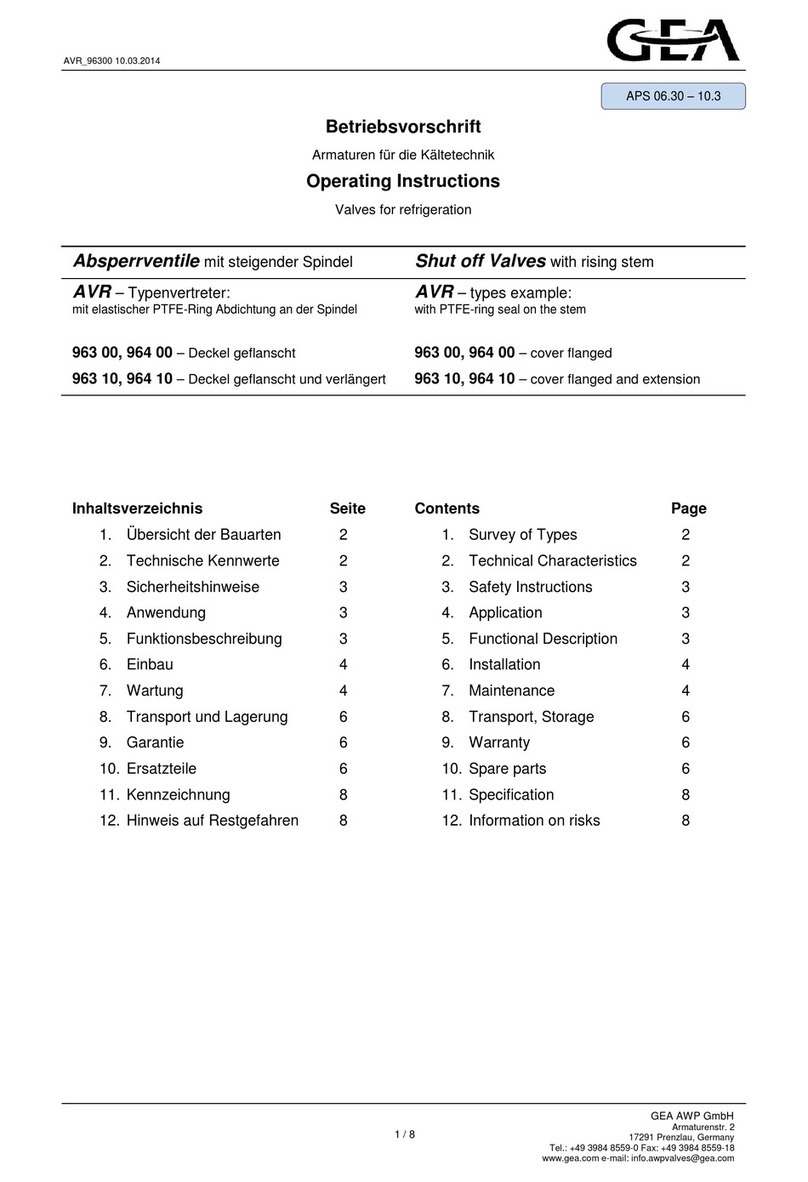
GEA
GEA AVR Series operating instructions
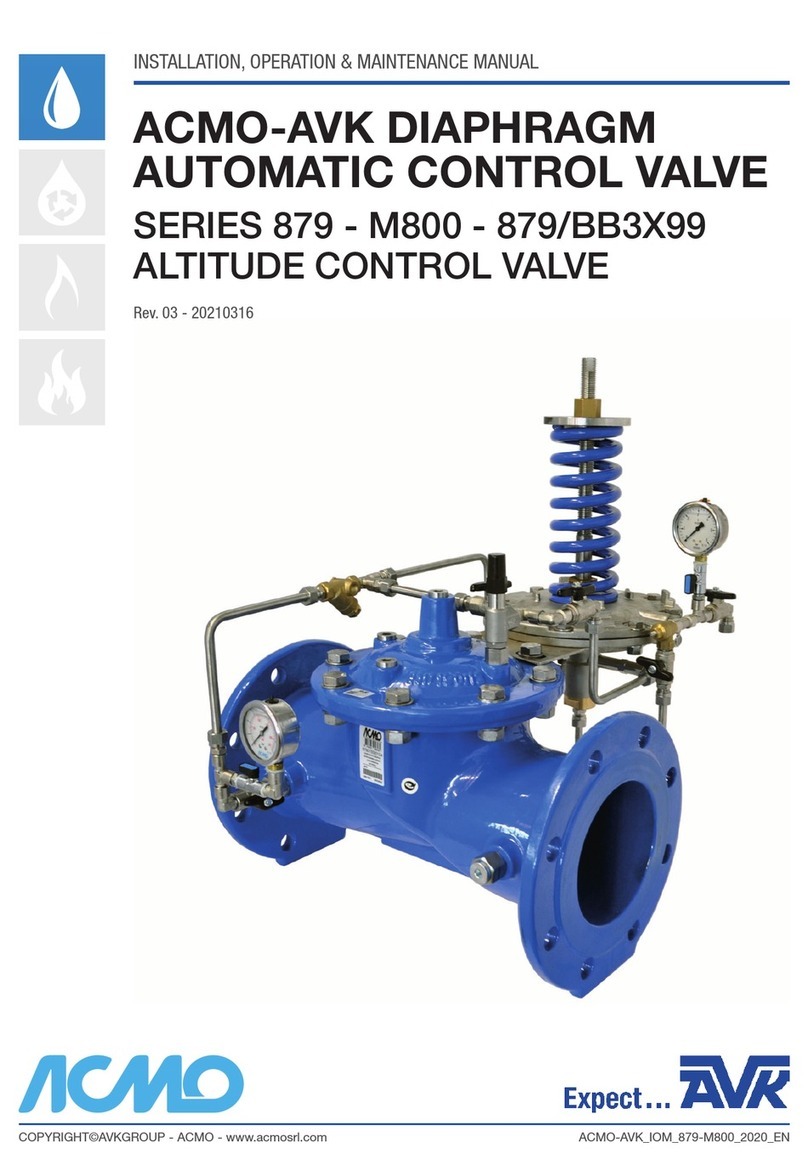
AVK
AVK ACMO 879 Series Installation, operation & maintenance manual
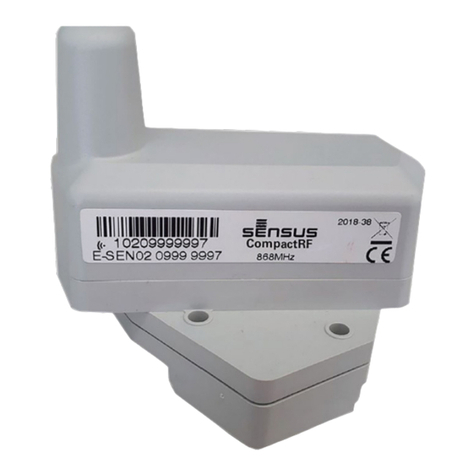
Xylem
Xylem Sensus CompactRF installation manual

Miele
Miele XKS 3130 W Fitting and installation instructions
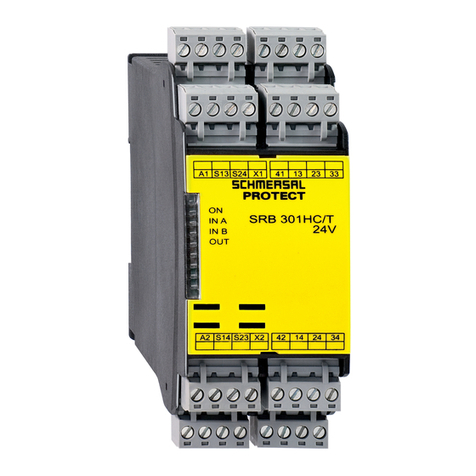
schmersal
schmersal SRB301HC/T-24V operating instructions

Beninca
Beninca AU.TR operating instructions

Pfeiffer
Pfeiffer Samson BR1a operating instructions

Schmalz
Schmalz SCPMi operating instructions
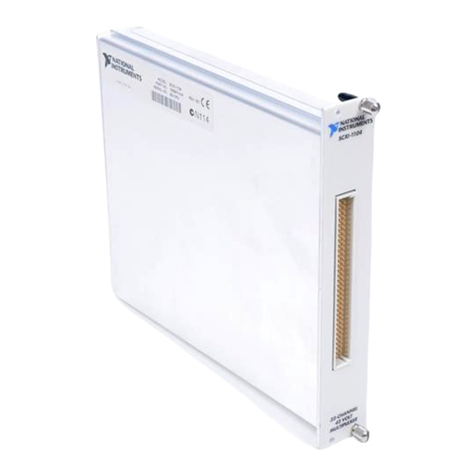
National Instruments
National Instruments SCXI-1104/C CALIBRATION PROCEDURE

Festo
Festo PREL-186 operating instructions
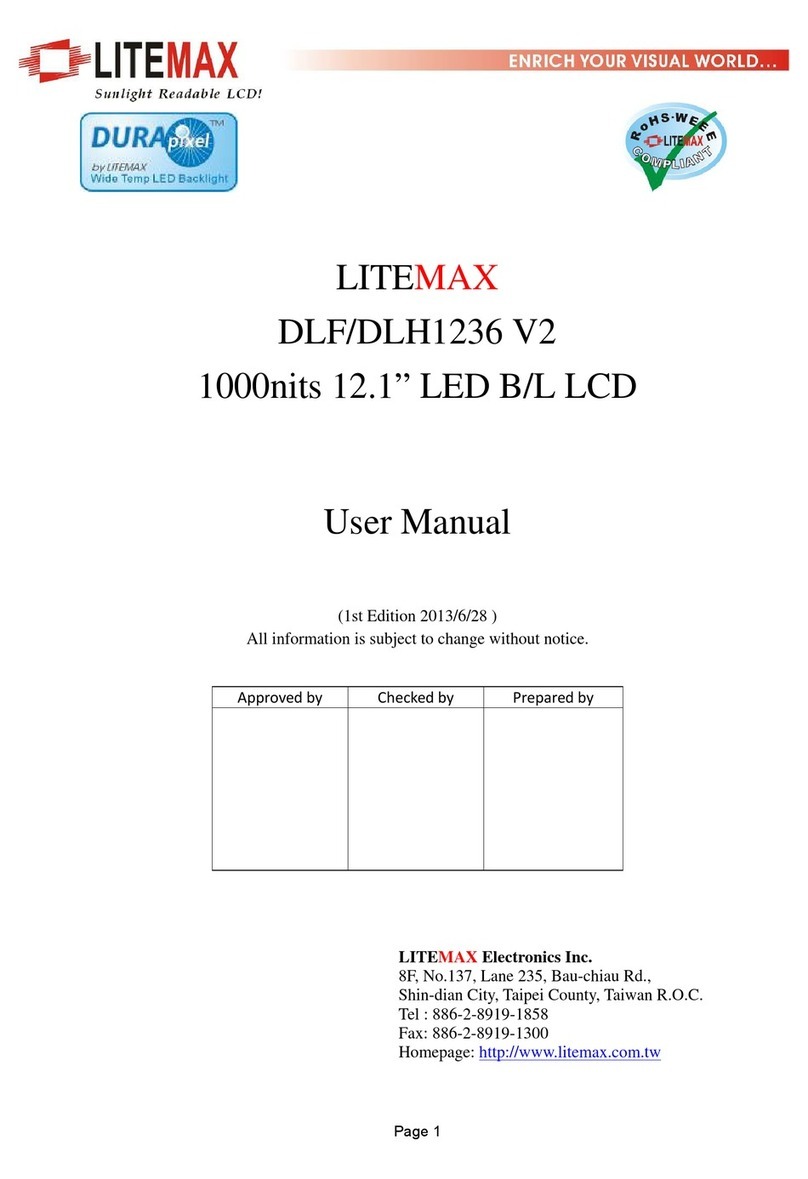
Litemax Electronics
Litemax Electronics DLF/DLH1236 V2 user manual

RYO
RYO LjunggrenAudio Airtenuator manual
